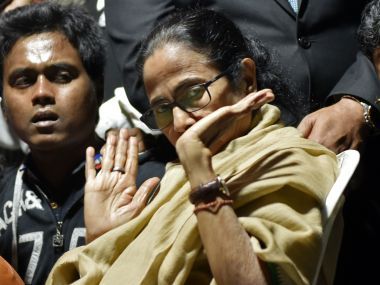A curious development is taking place among the Opposition political space. The Congress, led by its president Sonia Gandhi, on Monday held a meeting against the Citizenship Amendment Act (CAA) and the proposed NRC. The meeting at the Parliament complex was aimed at solidifying Opposition unity against the BJP, but it exposed the faultlines among the Opposition instead as key players such as Akhilesh Yadav, Mayawati, Arvind Kejriwal, DMK chief MK Stalin and West Bengal chief minister Mamata Banerjee stayed away.
Amartyaji is right. The problem is that the Opposition parties are agreed on national issues, but divided in their various states. This is why it is difficult to assemble all of them on a common platform or front; they tend to put their local interests first. So BJP wins w/ 37%. https://t.co/94JUCfTBNY
— Shashi Tharoor (@ShashiTharoor) January 13, 2020
The Congress was obviously unhappy. It accused the regional outfits of putting own interests ahead of ‘national’ interest. In return, the regional satraps accused the Congress of trying to steal credit and hijack the movement.
It is evident that Opposition unity is hampered by mutual trust deficit, but some motivations lie deeper. Take Mamata for example.
Among all the absentees, the TMC supremo’s absence was most interesting because her motivations are not immediately apparent. The Congress is not a player of consequence in West Bengal, unlike New Delhi, and hence Mamata was not driven by compulsions that faced Kejriwal. Since the Delhi elections are a three-way fight between the ruling AAP, BJP and Congress, any truck with Congress on CAA/NRC may damage Kejriwal’s chances of getting re-elected.
The Samajwadi Party (SP) and Bahujan Samaj Party (BSP) are wary of Congress for different reasons. The SP still believes that its alliance with Congress during 2017 Uttar Pradesh Assembly elections was a mistake that has caused it lasting harm. ‘Behenji’ Mayawati is still upset with Congress for trying to poach her MLAs in Rajasthan.
Mamata, however, is playing a completely different game, perhaps under the guidance of poll strategist Prashant Kishor. Few will give credence to her public statement that she chose to stay away because the Left and Congress unleashed violence in the state during the 9 January trade union strike. The nationwide strike saw Congress and Left activists clash with the police in Bengal but stray incidents of violence and arson or laying down of a few crude bombs on railway tracks are unlikely to have caused Mamata to take such a drastic step.

West Bengal chief minister Mamata Banerjee skipped Opposition meeting led by Congress. Getty Images
Her rhetoric, too, borders on overreaction. Vowing that she won’t allow Left and Congress to make the strike successful in Bengal, Mamata reportedly said: “Those who don’t have any political existence in the state are trying to ruin its economy by pursuing cheap politics such as strikes.”
Does a marginalised CPIM and a struggling Congress possess enough clout to “ruin” Bengal’s economy through a strike call? This is as fantastic a theory as Mamata’s stated reason behind boycotting the Congress-led Opposition meeting in New Delhi against CAA/NRC when she said: “I have decided to boycott the meeting convened by Sonia Gandhi on 13 January in New Delhi as I do not support the violence that the Left and Congress unleashed in West Bengal yesterday (Wednesday)… You don’t tell me how to fight CAA… If needed, I will fight alone.”
Some commentators have interpreted it as Mamata’s attempt to not let Congress take the credit for anti-CAA protests and not ceding leadership space on this issue. Mamata’s calculations are different.
Notably, her decision not to attend the anti-CAA meeting in New Delhi and clamping down hard on strikers on 9 January have allowed local CPIM and Congress leaders to allege that the chief minister is “hand in glove” with the BJP and is acting at Narendra Modi and Amit Shah’s behest. CPM leader Sujan Chakraborty was quoted, as saying: Mamata “is basically answerable to her Delhi bosses in BJP. She is frustrated after the bandh called by the Left-Congress trade unions became successful.”
This posturing in Bengal ought to give us an idea about the political game under way in West Bengal. Mamata’s move in trying to publicly put some distance between the TMC and CPM-Congress alliance in the state is a clever attempt at reinvigorating the struggling political forces so that the anti-TMC vote gets split instead of consolidating in favour of the BJP — as was evident during the 2019 Lok Sabha elections where the BJP emerged as the principal Opposition force in the state with 18 out of 42 seats.
The general elections, that resulted in an overwhelming return mandate for Modi-led NDA government, show BJP’s vote share had shot up to 40.2 percent from 17 percent in 2014. Curiously, while TMC’s seats crashed to 22, its vote share remained intact, even registering an increase from 39.7 percent in 2014 to 43.3 percent in 2019. Quite clearly, TMC suffered due to a consolidation of anti-TMC votes in BJP’s corner. The Left Front’s vote share crashed to 7.5 percent in 2019 from nearly 30 percent in 2014, while Congress also recorded a decline from 9.6 per cent to 5.5 percent.
Mamata would have carefully analysed the results, and so did the Congress and Left. While the last two is expected to form an alliance in 2021 Assembly polls, that may not be enough if their vote share continues to bleed. This is bad news for Mamata, who is also worried about the presence of Asaduddin Owaisi’s AIMIM cutting into her Muslim vote bank.
Mamata’s calculation, therefore, is to somehow prop up the Left Front and Congress that now lies emaciated and marginalized by playing a pantomime of faux rivalry with them, so that at least a bit of anti-TMC votes move away from BJP. That’s why Mamata won’t mind when the Left and Congress accuses her of being in a “secret pact” with the BJP because it serves her purpose too. She may even encourage such a charge. Mamata does run a risk of letting Left Front eat into the anti-BJP votes, but that’s a risk the TMC supremo will willingly take.
Find latest and upcoming tech gadgets online on Tech2 Gadgets. Get technology news, gadgets reviews & ratings. Popular gadgets including laptop, tablet and mobile specifications, features, prices, comparison.




















![[Book Review] The Blade Itself (The First Law Trilogy) by Joe Abercrombie](https://bendthekneegot.com/wp-content/uploads/2018/01/1516047103_maxresdefault-218x150.jpg)
















